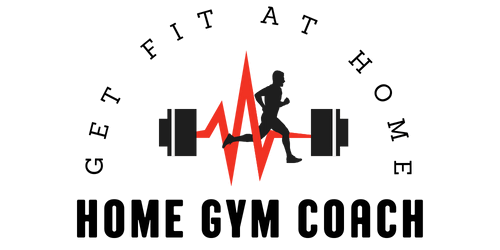So, you’ve been hitting the home workouts lately, but you’ve noticed that not everyone in your household is at the same fitness level. You might be wondering, “How do I adapt my home workouts for different fitness levels?” Well, fret not, because in this article, we’ll explore some easy and practical ways to tailor your home workouts to suit the varying fitness levels of your household. Whether you’re a beginner, intermediate, or advanced fitness enthusiast, we’ve got you covered with tips and strategies that will help everyone get the most out of their home workout sessions.

Understanding Different Fitness Levels
When it comes to fitness, everyone is different. People have different abilities, strengths, and weaknesses. Understanding these differences and tailoring workouts to suit individual needs is essential. By determining fitness levels, identifying strengths and weaknesses, and setting realistic goals, you can create a workout plan that is personalized and effective.
Determining Fitness Levels
Before you begin any workout program, it is important to determine your current fitness level. This will help you gauge your starting point and track your progress over time. There are various ways to assess fitness levels, such as measuring cardiovascular endurance, muscular strength, flexibility, and body composition. Consulting with a fitness professional or using online fitness assessments can provide valuable insights into your fitness level.
Identifying Strengths and Weaknesses
Once you have determined your fitness level, it is important to identify your strengths and weaknesses. This will allow you to focus on areas that need improvement and capitalize on your strengths. For example, if you have good flexibility but lack muscular strength, you can incorporate exercises that target strength training while also working on flexibility.
Setting Realistic Goals
Setting realistic goals is crucial to your fitness journey. By setting achievable targets, you can stay motivated and track your progress effectively. Consider both short-term and long-term goals that align with your fitness level and lifestyle. Whether it’s running a certain distance, increasing the amount of weight you lift, or improving your overall endurance, having clear goals will keep you focused and engaged in your workouts.
Tailoring Workouts for Beginners
If you are new to fitness or have been inactive for a while, it is important to start with low-impact exercises and gradually increase intensity. This allows your body to adapt and minimizes the risk of injury. Incorporating modifications and including rest periods are also crucial for beginners.
Starting with Low-Impact Exercises
For beginners, it is recommended to start with low-impact exercises that are gentle on the joints. Activities such as walking, swimming, or cycling are great options to improve cardiovascular endurance without putting excessive stress on the body. These exercises also help build a solid foundation before progressing to more intense workouts.
Gradually Increasing Intensity
As your fitness level improves, gradually increase the intensity of your workouts. This can be done by adding resistance, increasing the duration or intensity of cardiovascular exercises, or incorporating more challenging strength training exercises. The key is to progress at a pace that feels comfortable for your body while still challenging yourself.
Incorporating Modifications
Modifications are essential for beginners to ensure exercises are performed correctly and safely. If you find certain movements challenging or uncomfortable, modify them to suit your abilities. For example, if a push-up is too difficult, start with wall push-ups or push-ups on an elevated surface. As your strength improves, you can gradually progress to more advanced variations.
Including Rest Periods
Rest and recovery are just as important as exercise itself, especially for beginners. Give your body enough time to rest and repair between workouts to prevent overtraining and reduce the risk of injury. Aim for at least one full rest day each week and listen to your body’s signals for additional rest when needed.

Modifying Workouts for Intermediate Levels
Once you have developed a solid foundation of fitness, it’s time to take your workouts to the next level. Adding variety and complexity, increasing resistance and weight, and incorporating interval training are all effective ways to challenge yourself and continue making progress.
Adding Variety and Complexity
To avoid plateaus and keep your workouts exciting, add variety and complexity to your exercise routine. This can include trying different types of exercises, such as interval training, circuit training, or high-intensity interval training (HIIT). Mixing up your workouts not only challenges different muscle groups but also keeps you mentally engaged and motivated.
Increasing Resistance and Weight
As you progress, gradually increase the resistance or weight used in your strength training exercises. This will continue to challenge your muscles and stimulate growth. If you’re using dumbbells, resistance bands, or weight machines, consider adding increments of weight or tension over time. Remember to maintain proper form and technique to minimize the risk of injury.
Incorporating Interval Training
Interval training involves alternating between high-intensity exercise and periods of active recovery. This type of training is a great way to increase cardiovascular endurance, burn calories, and boost overall fitness. You can incorporate interval training into various forms of exercise, such as running, cycling, or bodyweight exercises. Start with shorter intervals and gradually increase the duration and intensity as your fitness improves.
Challenging Advanced Fitness Levels
For those who have reached an advanced fitness level, it’s time to push your limits and take your workouts to the next level. Increasing intensity and difficulty, incorporating plyometric exercises, and utilizing advanced training techniques can help you continue to challenge yourself and reach new heights.
Increasing Intensity and Difficulty
To continue progress at an advanced fitness level, it is important to increase the intensity and difficulty of your workouts. This can be done by increasing the weight or resistance used, reducing rest periods, or incorporating supersets and drop sets. The idea is to continually challenge your muscles and push beyond your comfort zone.
Incorporating Plyometric Exercises
Plyometric exercises, also known as jump training, are explosive movements that help improve power and speed. Incorporating exercises such as box jumps, burpees, or jump squats into your routine can provide a new level of challenge for advanced individuals. However, it is important to ensure proper technique and gradually increase the intensity to avoid injury.
Utilizing Advanced Training Techniques
Advanced fitness levels often require advanced training techniques to keep progressing. Techniques such as supersets, drop sets, or pyramid sets can be incorporated into your workouts to increase intensity and stimulate muscle growth. It is important to learn and understand these techniques properly to effectively implement them into your routine.

Customizing Home Workouts for Older Adults
As we age, our bodies may require different strategies for staying fit and healthy. When customizing home workouts for older adults, it is important to prioritize safety and joint health, focus on balance and flexibility, and include low-impact cardio exercises.
Prioritizing Safety and Joint Health
For older adults, safety should always be the top priority when designing home workouts. Consider exercises with lower impact to minimize stress on the joints and choose movements that are comfortable and pain-free. Avoid exercises that involve excessive twisting or jumping, as these can increase the risk of injury.
Focusing on Balance and Flexibility
As we age, balance and flexibility become increasingly important for maintaining mobility and preventing falls. Incorporate exercises that improve balance, such as standing on one leg or heel-to-toe walks. Additionally, include stretching exercises to enhance flexibility and prevent stiffness. Yoga or tai chi are excellent options that combine balance, flexibility, and relaxation.
Including Low-Impact Cardio
Cardiovascular exercise is crucial for older adults, but it’s important to choose low-impact options to protect joints and minimize strain. Activities such as brisk walking, swimming, or using a stationary bike are great options that provide cardiovascular benefits without excessive impact. Aim for at least 150 minutes of moderate-intensity aerobic exercise per week, spread throughout several sessions.
Adapting Workouts for Pregnant Women
During pregnancy, it is important to adapt workouts to ensure the safety and well-being of both the mother and the baby. Consulting with a healthcare provider, modifying exercises for comfort, and avoiding high-impact and risky movements are key considerations for pregnant women.
Consulting with a Healthcare Provider
Before starting or modifying any exercise routine during pregnancy, it is crucial to consult with a healthcare provider. They can provide personalized guidance based on your specific needs and medical history. Some women may have certain conditions or complications that require additional precautions or modifications.
Modifying Exercises for Comfort
As the body undergoes various changes during pregnancy, certain exercises may become uncomfortable or potentially risky. It is important to modify movements and positions to accommodate the changing body. For example, replacing high-impact exercises with low-impact alternatives or avoiding exercises that involve lying flat on the back after the first trimester.
Avoiding High-Impact and Risky Movements
High-impact exercises, activities with a high risk of falling or injury, and exercises that involve lying flat on the back should generally be avoided during pregnancy. This includes activities like running, jumping, heavy weightlifting, or contact sports. Instead, opt for low-impact exercises that provide cardiovascular benefits without excessive strain or risk.
Considering Health Conditions and Injuries
Fitness levels can also be influenced by existing health conditions or injuries. When considering these factors, it is important to seek medical clearance, avoid aggravating conditions, and incorporate rehabilitation exercises when necessary.
Seeking Medical Clearance
If you have any health conditions or injuries, it is important to seek medical clearance before starting or modifying an exercise routine. Your healthcare provider can help determine any limitations or precautions that should be taken to ensure your safety and well-being.
Avoiding Aggravating Conditions
When dealing with health conditions or injuries, it is important to avoid exercises that may aggravate the condition or cause further harm. For example, individuals with knee issues may need to modify or avoid high-impact exercises such as running or jumping. Instead, focus on exercises that are low-impact and do not exacerbate the underlying condition.
Incorporating Rehabilitation Exercises
If you are recovering from an injury or dealing with a chronic condition, incorporating rehabilitation exercises is crucial. These exercises are designed to aid in the healing process, improve mobility, and strengthen the affected area. Working with a physical therapist or a qualified fitness professional can help develop a safe and effective rehabilitation program.
Utilizing Home Workout Equipment
Having home workout equipment can greatly enhance your fitness routine, offering more variety, convenience, and opportunities for progression. When utilizing home workout equipment, it is important to choose appropriate equipment for your goals, adjust resistance levels accordingly, and utilize fitness apps and technology to enhance your workouts.
Choosing Appropriate Equipment
When selecting home workout equipment, consider your fitness goals, available space, and personal preferences. Some popular options include dumbbells or resistance bands for strength training, a stationary bike or treadmill for cardiovascular exercise, or a stability ball for core workouts. Choose equipment that aligns with your goals and suits your individual needs.
Adjusting Resistance Levels
For equipment that offers variable resistance, such as dumbbells or resistance bands, it is important to adjust the resistance levels to match your current fitness level. Start with a weight or tension that allows you to perform the exercises with proper form and gradually increase as you become stronger. This ensures a challenging workout while minimizing the risk of injury.
Utilizing Fitness Apps and Technology
Take advantage of fitness apps and technology to enhance your home workouts. There are numerous apps available that offer guided workouts, tracking features, and personalized training plans. These tools can help keep you motivated, provide structure to your workouts, and track your progress over time. Additionally, fitness trackers or smartwatches can provide valuable insights into your daily activity levels and help you stay accountable.
Creating a Workout Schedule
To maintain consistency and maximize the effectiveness of your workouts, creating a workout schedule is essential. Establish realistic timeframes, balance cardiovascular and strength training, and incorporate recovery days for optimal results.
Establishing Realistic Timeframes
Consider your daily schedule and commitments when establishing a workout schedule. Aim for a minimum of 150 minutes of moderate-intensity aerobic exercise per week, spread throughout several sessions. Break it down into manageable increments that work for you, whether it’s 30 minutes a day or longer sessions a few times a week.
Balancing Cardiovascular and Strength Training
A well-rounded workout routine should include both cardiovascular exercise and strength training. Cardiovascular exercise helps improve heart health and burn calories, while strength training builds muscle and increases metabolism. Aim for a balance between the two, incorporating cardio workouts like running or cycling, as well as strength training exercises using weights or resistance bands.
Incorporating Recovery Days
Recovery is an integral part of any workout program. It allows the body to repair and adapt, preventing overtraining and reducing the risk of injury. Plan rest days or lighter activity days into your schedule to give your body the time it needs to recover. This could involve activities like stretching, yoga, or low-intensity walks. Listen to your body and adjust your schedule accordingly to avoid burnout.
Staying Motivated and Accountable
Staying motivated and accountable is key to maintaining a consistent workout routine and achieving your fitness goals. Setting short-term and long-term goals, tracking progress, and joining virtual workout communities can all contribute to your success.
Setting Short-Term and Long-Term Goals
Setting goals gives you something to work towards and helps maintain your motivation. Set both short-term and long-term goals that are specific, measurable, attainable, relevant, and time-bound (SMART). For example, completing a 5k run in three months or increasing the amount of weight lifted in each strength training exercise by a certain percentage within a month. Celebrate your achievements along the way to stay motivated.
Tracking Progress and Celebrating Achievements
Tracking your progress is essential to see how far you’ve come and identify areas for improvement. Keep a workout journal or use a fitness app to record your workouts, track your strength gains, note changes in endurance, and take measurements if desired. Celebrate each milestone and achievement to stay positive and encouraged on your fitness journey.
Joining Virtual Workout Communities
Joining virtual workout communities can provide support, motivation, and connection with like-minded individuals. Online fitness groups, forums, or social media communities can offer a sense of accountability and a platform to share experiences, ask questions, and find inspiration. Participating in virtual fitness challenges or group workout sessions can also add a fun and competitive element to your workouts.
In conclusion, adapting home workouts to different fitness levels is crucial for optimal results and safety. Determining fitness levels, identifying strengths and weaknesses, and setting realistic goals help lay the foundation for a successful workout program. By tailoring workouts to beginners, intermediate levels, older adults, pregnant women, or those with health conditions or injuries, you can cater to individual needs and progress at a suitable pace. Utilizing home workout equipment, creating a workout schedule, and staying motivated and accountable are additional strategies that contribute to a well-rounded fitness routine. Regardless of your fitness level, remember that consistency and patience are key to long-term success on your fitness journey.


